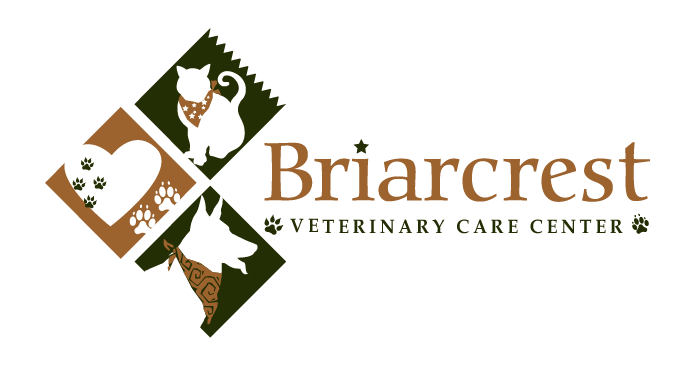Library
-
Lameness occurs due to the injury or debilitation of one or more parts of the leg: bones, muscles, nerves, tendons, ligaments, or skin. Depending on the cause of the limp, immediate veterinary care may be needed. If your dog is in severe pain, carefully transport your dog to your veterinary hospital or emergency hospital immediately. For non-emergency limps, you may be able to determine the cause of the limp and provide home care. If the lameness persists for more than 24 hours, seek veterinary care. Medication or surgery may be necessary to help your dog heal and reduce pain.
-
Tail injuries are common and can sometimes be managed with home first aid but some cases require veterinary care. Abrasions are mild scrapes that can be treated with daily cleaning and application of antibiotic ointment. Lacerations are more serious cuts that may expose underlying muscle and bone requiring stitches and often antibiotics. Happy tail is a condition where the skin at the end of the tail becomes damaged and continues to split and bleed whenever the wagging tail hits a hard surface. Bandaging, antibiotics and pain medication may help these heal but amputation may become necessary to reduce re-injury. Tail fractures can heal well if they occur near the tip of the tail but if bones are severely damaged then amputation may be required. Nerve damage can occur from fractures, crushing injuries or severe tail pulls causing stretching or tearing of the nerves and can result in loss of fecal and urinary continence and can also result in a limp tail. Limber tail is a painful muscle condition likely caused by overexertion and treated with rest and anti-inflammatories.
-
Flea allergy dermatitis is a common cause of allergic reactions in dogs. The antigens in flea saliva cause an intensely itchy response in sensitive dogs. Itching and hair loss in the region from the middle of the back to the tail base and down the rear legs (the flea triangle) is often associated with this allergy. Strict flea control is essential for treatment and prevention.
-
Fleas are the most common nuisance and parasite affecting dogs, and an infestation can lead to serious health problems. Flea control requires a three-pronged approach; they need to be eliminated from 1) your dog, 2) any other cats and dogs that you have, 3) your home and yard. There are many flea control products available and your veterinarian can help you determine which are the safest and most effective for your pets.
-
Fluralaner is given by mouth or applied topically and is used to treat flea and tick infestations, and also off-label to treat certain types of mange and mites. Give as directed. Side effects are uncommon but may include stomach upset or neurologic symptoms. Do not use in pets with a history of seizures. If a negative reaction occurs, please call the veterinary office.
-
Follicular conjunctivitis is an eye condition that primarily affects young dogs, under 18 months of age. Follicular conjunctivitis is often caused by allergens, such as dust, grass, and weeds. Mild cases of follicular conjunctivitis do not require treatment. If your dog’s eye is uncomfortable, treatment may include saline rinses, topical steroids, and possible debridement.
-
Guarding food items can be a normal behavior in dogs, but when it escalates, the safety of both people and animals is compromised. Exercises to prevent and reverse guarding behavior can be beneficial to any dog. Professional guidance is needed for any dog who has repeatedly come into conflict with people or pets because of guarding behavior.
-
Adverse food reactions in dogs are either caused by food allergy – an immune response to something ingested or food intolerance – a non-immunological response to something ingested. Signs of food intolerance are usually only digestive in nature. Food intolerance will generally occur on the initial exposure to the food or food additive in contrast to food allergy which requires repeated exposures to develop. Different causes of food intolerance include food poisoning, or inappropriate ingestion of an irritant, reaction to food additives, histamine reactions, lactose intolerance and dietary indiscretion such as eating fat or bones. A dietary history is important in diagnosing these conditions.
-
Dogs often break their teeth from chewing on bones, antlers, and hard chew toys. There are five classifications of tooth fractures and each needs treatment to avoid tooth sensitivity and pain. Clinical signs include chewing on one side of the mouth, excessive drooling, dropping food while eating, pawing at the mouth, and facial swelling. Your veterinarian may perform a root canal or extract the tooth. Eliminating hard chew toys and treats can prevent tooth fractures.
-
Gastritis is defined as inflammation of the lining of the stomach. The most common clinical signs associated with gastritis are sudden vomiting and decreased appetite. Other clinical signs may include dehydration, lethargy or depression, increased thirst, blood in the vomit or feces, and abdominal pain. In acute cases, only minimal diagnostics such as blood and urine tests are required. Treatment depends on the underlying cause. Most acute cases resolve without medical intervention.


